
How to Use Arduino Pro: Examples, Pinouts, and Specs
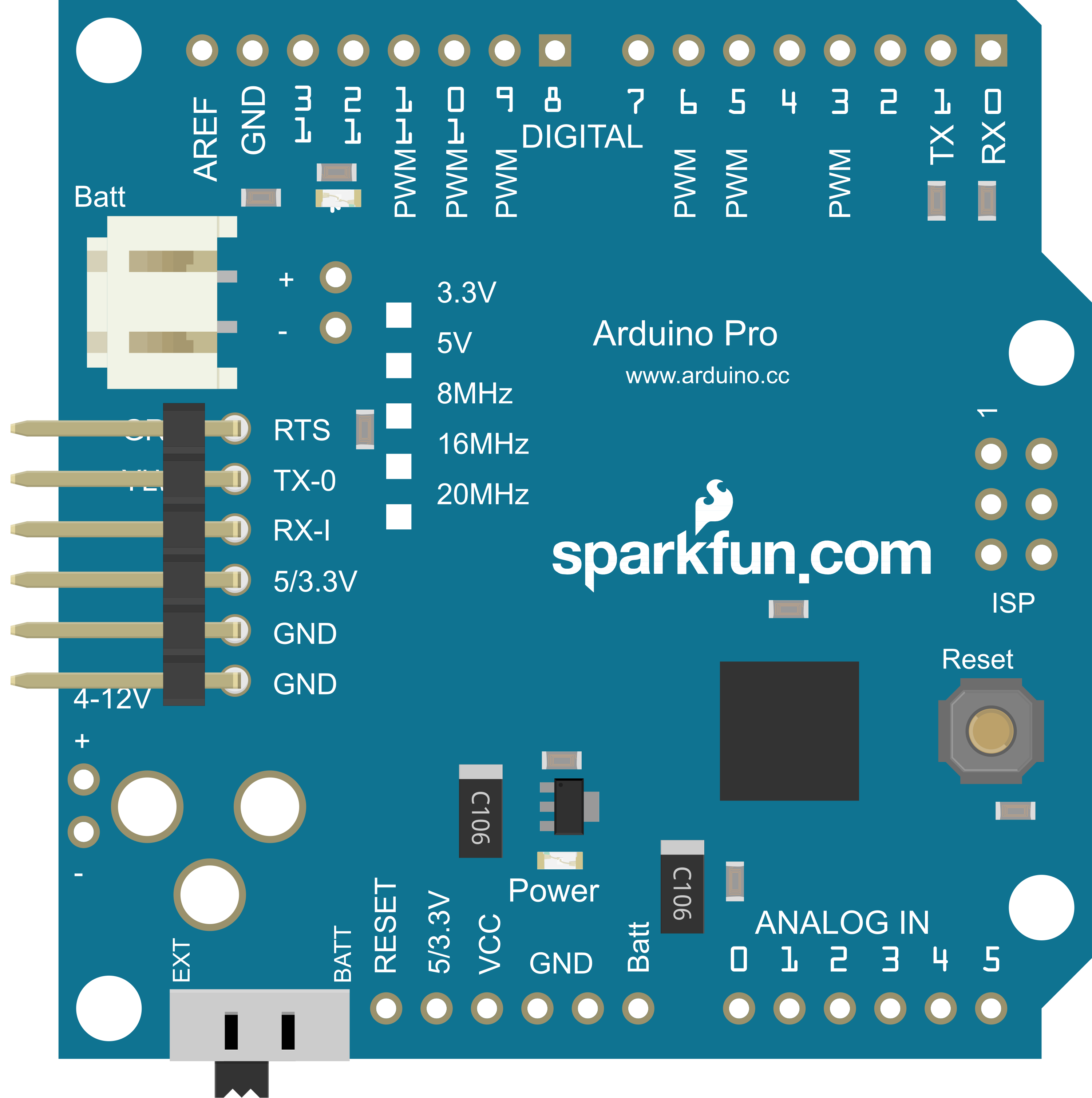
 Design with Arduino Pro in Cirkit Designer
Design with Arduino Pro in Cirkit DesignerIntroduction
The Arduino Pro is a compact microcontroller board based on the ATmega328P microcontroller. It is designed for advanced users who require a small form factor for their Arduino projects. The Arduino Pro is ideal for embedding into projects where space is a premium and where the board will be permanently installed.
Common applications for the Arduino Pro include wearable technology, portable instrumentation, custom embedded systems, and high-performance prototypes.
Explore Projects Built with Arduino Pro
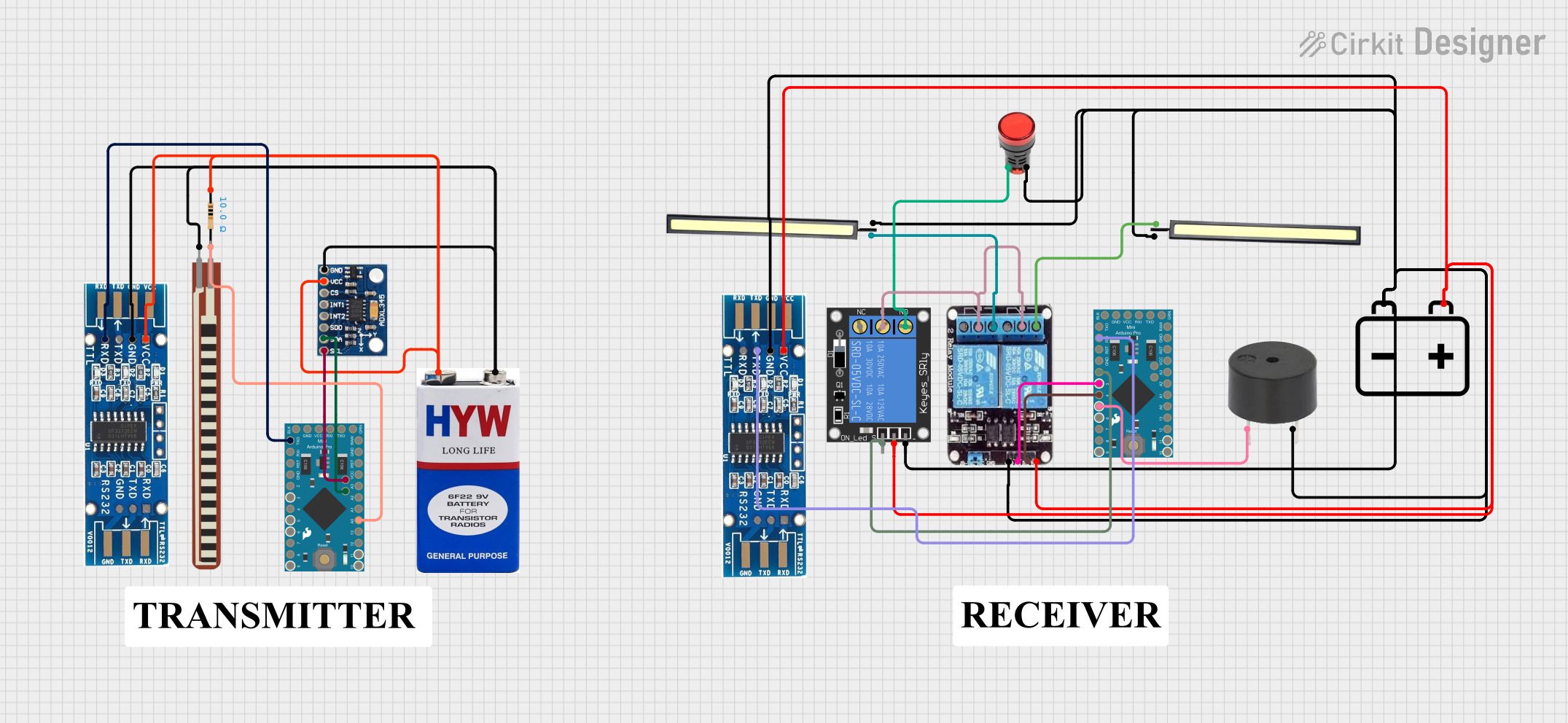
 Open Project in Cirkit Designer
Open Project in Cirkit Designer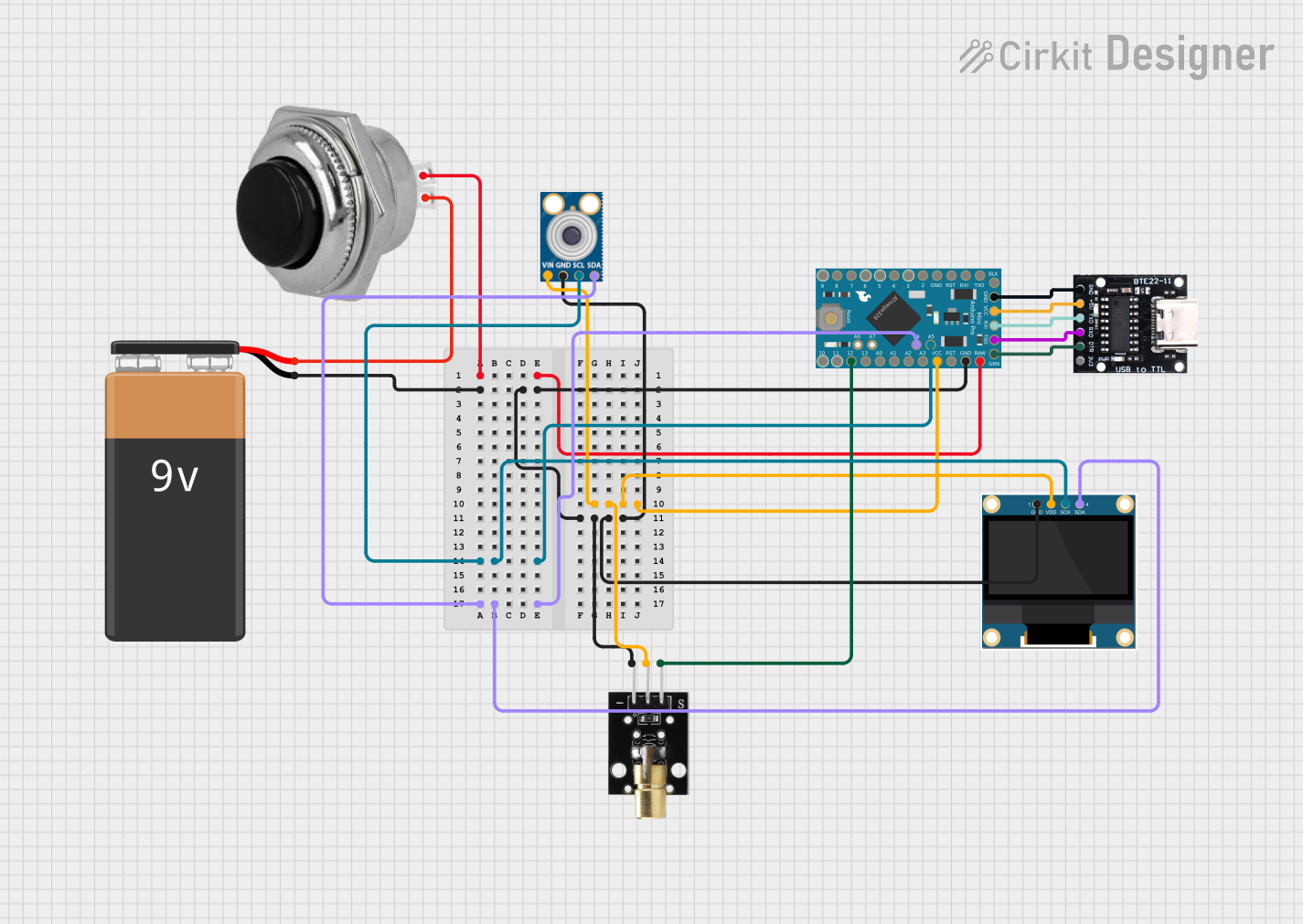
 Open Project in Cirkit Designer
Open Project in Cirkit Designer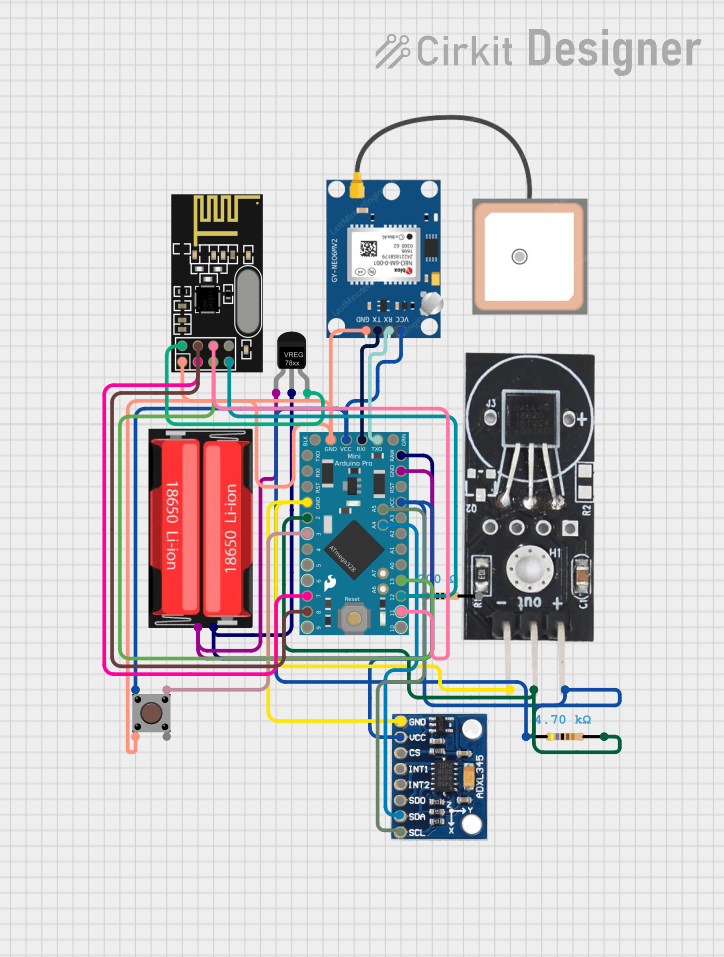
 Open Project in Cirkit Designer
Open Project in Cirkit Designer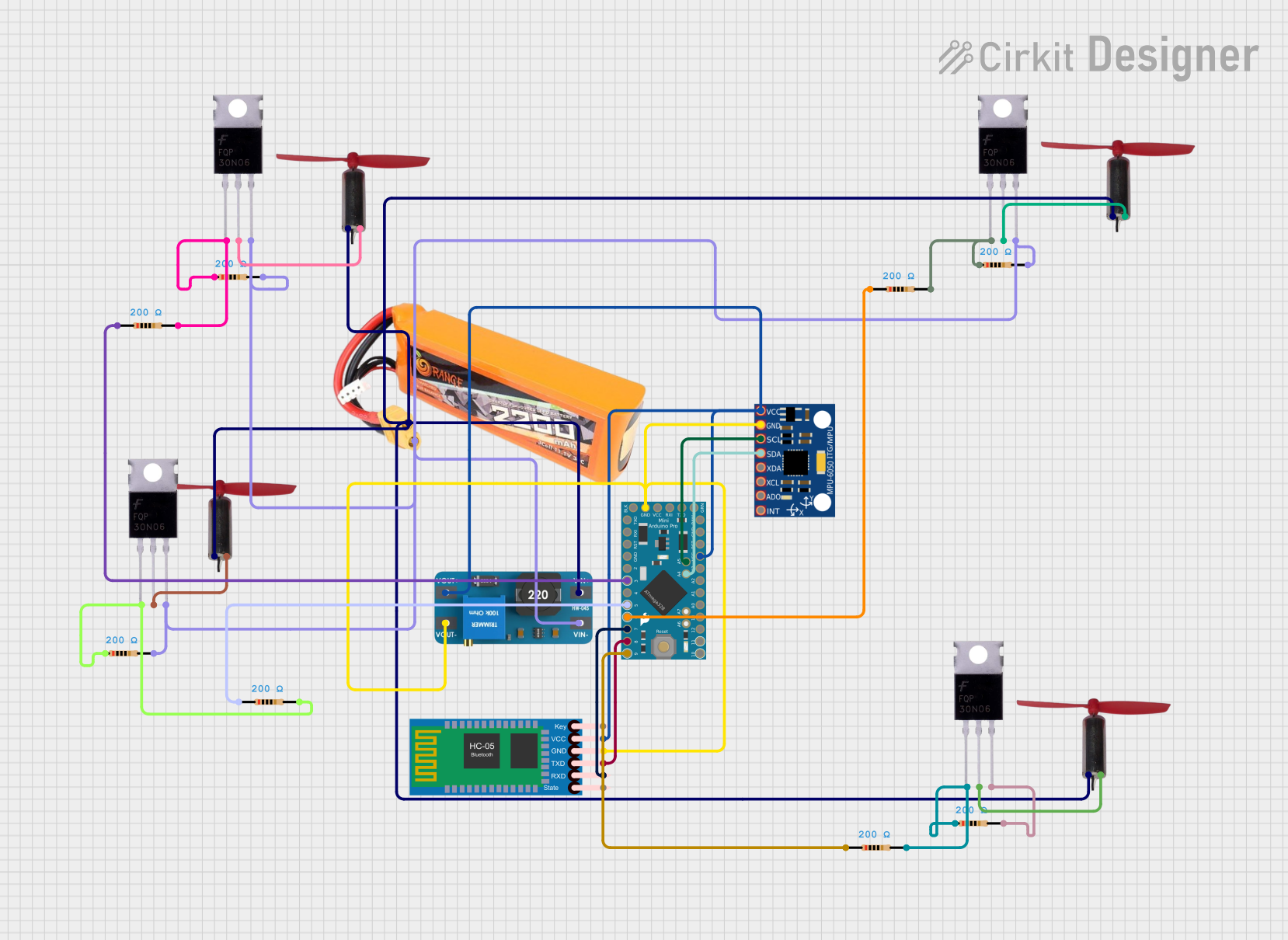
 Open Project in Cirkit Designer
Open Project in Cirkit DesignerExplore Projects Built with Arduino Pro

 Open Project in Cirkit Designer
Open Project in Cirkit Designer
 Open Project in Cirkit Designer
Open Project in Cirkit Designer
 Open Project in Cirkit Designer
Open Project in Cirkit Designer
 Open Project in Cirkit Designer
Open Project in Cirkit DesignerTechnical Specifications
Key Technical Details
- Microcontroller: ATmega328P
- Operating Voltage: 3.3V or 5V (depending on the model)
- Input Voltage (recommended): 5V - 12V
- Input Voltage (limits): 3.35V - 12V
- Digital I/O Pins: 14 (of which 6 provide PWM output)
- Analog Input Pins: 6
- DC Current per I/O Pin: 40 mA
- DC Current for 3.3V Pin: 50 mA
- Flash Memory: 32 KB (ATmega328P) of which 0.5 KB used by bootloader
- SRAM: 2 KB (ATmega328P)
- EEPROM: 1 KB (ATmega328P)
- Clock Speed: 8 MHz (3.3V model) or 16 MHz (5V model)
Pin Configuration and Descriptions
| Pin Number | Function | Description |
|---|---|---|
| 1 | RESET | Used to reset the microcontroller |
| 2-13 | Digital Pins | Digital input/output pins, PWM on pins 3, 5, 6, 9, 10, and 11 |
| 14-19 | Analog Pins | Analog input pins (A0-A5) |
| 20 | AREF | Analog reference voltage for the ADC |
| 21 | GND | Ground |
| 22 | AREF | Analog reference voltage for the ADC |
| 23 | 3.3V | 3.3V power supply pin (3.3V model only) |
| 24 | 5V | 5V power supply pin (5V model only) |
| 25 | GND | Ground |
| 26 | Vin | Input voltage to the Arduino board |
Usage Instructions
Integrating Arduino Pro into a Circuit
- Powering the Board: The Arduino Pro can be powered via the Vin pin with a regulated 5V to 12V supply, or directly to the 3.3V or 5V pin if a regulated voltage is available.
- Programming the Board: Use a USB-to-serial converter to connect the Arduino Pro to a computer for programming.
- Connecting I/O: Connect sensors, actuators, and other components to the digital and analog pins as required for your project.
Best Practices
- Ensure that the power supply is within the recommended limits to prevent damage.
- Use a current limiting resistor when connecting LEDs to the digital pins.
- Avoid drawing more than 40 mA from any single I/O pin.
- Utilize the onboard reset button or the RESET pin for troubleshooting and resetting the board.
Troubleshooting and FAQs
Common Issues
- Board not recognized by computer: Ensure that the USB-to-serial converter drivers are installed and that the correct board and port are selected in the Arduino IDE.
- Incorrect voltages at I/O pins: Verify that the board is powered correctly and that the power supply is stable.
- Sketch not running: Check the board's connection to the computer, ensure the correct board is selected in the IDE, and that the sketch is uploaded successfully.
Solutions and Tips
- If the Arduino Pro is not responding, try pressing the reset button or cycling the power.
- For issues with uploading sketches, double-check the connections between the Arduino Pro and the USB-to-serial converter.
- Ensure that the bootloader is correctly installed on the ATmega328P. If necessary, re-burn the bootloader using an ISP programmer.
Example Code for Arduino UNO
// Blink an LED connected to pin 13 of the Arduino Pro
void setup() {
pinMode(13, OUTPUT); // Initialize pin 13 as an output
}
void loop() {
digitalWrite(13, HIGH); // Turn the LED on
delay(1000); // Wait for a second
digitalWrite(13, LOW); // Turn the LED off
delay(1000); // Wait for a second
}
Note: The above code is for illustrative purposes and assumes that an LED is connected to pin 13 with a suitable current-limiting resistor.
For further assistance or questions, users are encouraged to consult the Arduino community forums or the extensive online resources available for the Arduino platform.